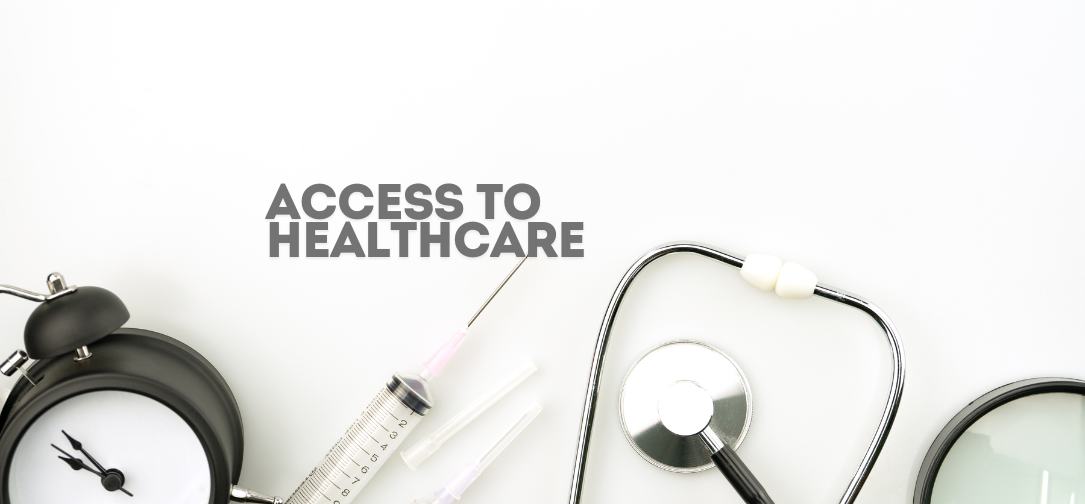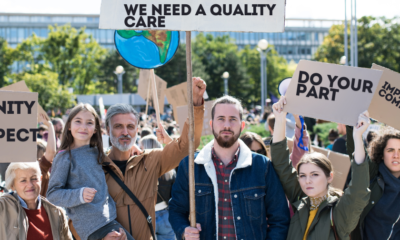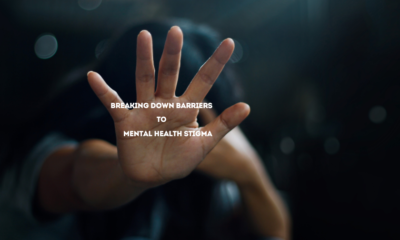Healthcare
Access to Healthcare: Barriers and Solutions for Universal Coverage

Access to healthcare is a fundamental human right enshrined in numerous international agreements, including the Universal Declaration of Human Rights and the Constitution of the World Health Organization (WHO). Yet, despite global recognition of this right, access to adequate healthcare remains elusive for millions of people worldwide. The promise of universal health coverage (UHC), a healthcare system where all individuals have access to necessary services without financial hardship, remains an unfulfilled goal for many nations. Achieving UHC is not only a matter of public health but also one of social equity, economic development, and human dignity.
Universal health coverage is crucial for improving population health, reducing poverty, and enhancing economic productivity. However, numerous barriers to healthcare access stand in the way of achieving this goal. These obstacles range from structural and financial challenges to socio-cultural issues that disproportionately affect vulnerable populations. In this article, we will explore the key barriers to healthcare access and propose solutions that can bring the world closer to achieving UHC.
Global Landscape of Healthcare Access
Healthcare systems around the world are diverse and shaped by local economies, cultural practices, and political systems. Some countries, like those in Scandinavia and parts of Western Europe, have made significant strides in providing healthcare services to all citizens. In contrast, many low- and middle-income countries (LMICs) face significant challenges in building robust healthcare infrastructures. Even in high-income countries like the United States, disparities in healthcare access are evident, with vulnerable populations often lacking adequate coverage.
According to the WHO and the World Bank, nearly half of the world’s population does not have full access to essential healthcare services, and approximately 100 million people are pushed into extreme poverty each year due to out-of-pocket healthcare expenses. This indicates that healthcare inequity is a global problem affecting rich and poor nations. Achieving UHC involves tackling a complex array of challenges that vary across regions and populations. The barriers can be broadly categorized into financial, structural, socio-cultural, and political factors.
Barriers to Healthcare Access
1. Financial Barriers
- Out-of-Pocket Costs
One of the most significant barriers to healthcare is the cost of services. Out-of-pocket (OOP) payments direct payments made by individuals at the time they receive healthcare are a major contributor to financial hardship and healthcare inequity. In many countries, particularly in LMICs, OOP payments represent a significant portion of healthcare financing. This leaves low-income individuals and families unable to afford necessary services, leading to catastrophic health expenditures or neglect of essential care.
For example, in sub-Saharan Africa, nearly 37% of healthcare expenditure is covered by OOP payments, which leads to delays in seeking care or avoiding treatment altogether due to cost concerns. In contrast, countries with national health systems or social health insurance schemes, like Canada or the United Kingdom, have much lower OOP payments, resulting in fewer financial barriers to accessing healthcare.
- Lack of Health Insurance
Another major financial barrier is the lack of health insurance coverage. Health insurance helps to pool risks and distribute healthcare costs across a population, thus reducing the financial burden on individuals. However, in many regions, particularly in LMICs, the majority of the population remains uninsured. Even in countries like the United States, where health insurance is widely available, millions remain uninsured due to high premiums or gaps in employment-based coverage.
The lack of insurance leads to disparities in access to care. In the absence of insurance, people may forgo preventive services or regular check-ups, exacerbating health issues that could have been treated earlier and more cost-effectively.
- Health System Financing
Many countries suffer from underfunded health systems, particularly in LMICs, where government expenditure on health is insufficient to provide adequate services. Poor health system financing leads to understaffed facilities, limited medical supplies, and inadequate infrastructure, which all compromise the quality and accessibility of care. The scarcity of funds forces governments to impose user fees, exacerbating the financial burden on the most vulnerable populations.
2. Structural Barriers
- Geographic Inaccessibility
Geographic barriers play a major role in healthcare inequities, particularly in rural and remote areas where healthcare facilities are sparse. Long travel distances, poor infrastructure, and lack of transportation create significant challenges for people in these areas. In many LMICs, rural residents often must travel several hours or even days to reach the nearest healthcare facility. The disparities between rural and urban healthcare services are evident not only in the availability of facilities but also in the quality of care provided.
In India, for instance, healthcare infrastructure is concentrated in urban areas, leaving rural populations underserved. This urban-rural divide creates stark differences in health outcomes. In addition, conflict-affected regions or areas experiencing natural disasters face further disruptions in healthcare access, as medical facilities are often destroyed or abandoned.
- Healthcare Workforce Shortages
Another structural barrier to healthcare access is the shortage of healthcare professionals. Many regions, particularly in sub-Saharan Africa and parts of South Asia, suffer from a severe lack of trained doctors, nurses, and other healthcare workers. The brain drain whereby trained healthcare workers emigrate to higher-income countries for better job opportunities further exacerbates this issue. The WHO estimates that by 2030, there will be a global shortage of 18 million healthcare workers, predominantly in LMICs.
The shortage of healthcare workers leads to overburdened facilities, long waiting times, and a decline in the quality of care. Without an adequate workforce, even well-funded healthcare systems cannot function effectively. Furthermore, the uneven distribution of healthcare workers, with most congregating in urban areas, leaves rural populations disproportionately underserved.
- Infrastructure Deficiencies
In many parts of the world, healthcare facilities are insufficiently equipped or maintained. Lack of infrastructure such as hospitals, clinics, clean water, electricity, and proper sanitation severely limits the ability to deliver care. Without proper equipment and medications, healthcare providers cannot offer the full spectrum of services needed to diagnose and treat diseases.
In conflict zones and fragile states, healthcare infrastructure is often the first to be compromised. For example, war-torn countries like Yemen and Syria have seen their healthcare systems collapse, leaving millions without access to basic medical services.
3. Socio-Cultural Barriers
- Discrimination and Marginalization
Discrimination based on gender, ethnicity, religion, and socioeconomic status often prevents people from accessing healthcare. Marginalized groups, including indigenous peoples, minorities, refugees, and LGBTQ+ individuals, frequently encounter stigma and bias in healthcare settings, which can deter them from seeking care. Additionally, cultural or religious beliefs may conflict with certain medical practices, making some individuals reluctant to use formal healthcare services.
In many patriarchal societies, women and girls face specific barriers to healthcare access due to gender-based discrimination. For instance, in parts of South Asia and sub-Saharan Africa, women may require permission from male family members to seek healthcare. This not only delays treatment but also limits their autonomy in making decisions about their own health.
- Health Literacy and Education
Health literacy, the ability to understand and act upon health information, is another significant socio-cultural barrier. Many individuals, especially in low-income communities, lack the knowledge needed to navigate healthcare systems, understand their health conditions, or adhere to prescribed treatments. This is exacerbated by low levels of formal education and limited access to reliable health information.
For example, in many African countries, misconceptions about diseases like HIV/AIDS and Ebola have led to widespread stigma and delayed healthcare-seeking behavior. Similarly, a lack of understanding of maternal and child health can lead to poor health outcomes in these populations.
4. Political Barriers
- Policy Inconsistencies and Fragmentation
Healthcare access is often hindered by political factors, such as inconsistent policies, weak governance, and corruption. In many countries, healthcare policies are fragmented, with different regions or states having varying levels of services and coverage. This creates inequities in access to care, particularly for populations living in poorer regions. Moreover, corruption and mismanagement of healthcare funds can lead to inefficiencies, further reducing the availability and quality of services.
In some LMICs, political instability and changing government priorities result in inconsistent healthcare policies that fail to address the needs of the population. For instance, shifting government priorities in healthcare budgets may result in the diversion of funds from essential services, such as maternal and child health, to other areas deemed politically more advantageous.
- Inadequate International Support
The global push for UHC also requires international cooperation and support. However, many LMICs receive insufficient assistance from the international community, both in terms of financial aid and technical expertise. While international organizations like the WHO and World Bank provide crucial support for health systems, their efforts are often constrained by limited resources and competing global priorities.
Additionally, global health initiatives sometimes focus on specific diseases such as HIV/AIDS, malaria, or tuberculosis at the expense of broader healthcare system strengthening. While vertical programs addressing individual diseases are important, they can inadvertently weaken efforts to build integrated health systems that address a broader range of health issues.
Solutions for Universal Health Coverage
Achieving UHC requires a multi-faceted approach that addresses the various barriers to healthcare access. These solutions must be tailored to the specific needs of different countries and populations, taking into account local economic, social, and political contexts.
1. Financial Solutions
- Expanding Health Insurance Coverage
One of the most effective ways to improve healthcare access is to expand health insurance coverage. Countries like Thailand and Rwanda have successfully implemented national health insurance schemes that provide coverage to a large portion of their populations, significantly reducing OOP payments and improving access to care. Expanding health insurance in LMICs requires innovative financing mechanisms, such as social health insurance, community-based insurance schemes, or taxation-based models.
- Eliminating User Fees
Many countries have successfully improved healthcare access by eliminating user fees for essential services, particularly for vulnerable populations such as children, pregnant women, and the elderly. Countries like Zambia and Uganda have demonstrated that removing user fees increases healthcare utilization and reduces the financial burden on low-income households.
- Increasing Health System Funding
Governments must commit to increasing healthcare spending, particularly in LMICs. This can be achieved through both domestic resource mobilization such as increasing taxes or reallocating government funds and international support from donor agencies and global health organizations. Adequate funding is essential for building healthcare infrastructure, training healthcare workers, and ensuring the availability of medical supplies and equipment.
2. Structural Solutions
- Strengthening Healthcare Infrastructure
Building and maintaining healthcare infrastructure, particularly in rural and remote areas, is critical for improving access to care. Governments and international organizations must invest in building new facilities, upgrading existing ones, and ensuring that all healthcare facilities are adequately equipped with the necessary tools and medications.
- Addressing Workforce Shortages
To address the global shortage of healthcare workers, countries must invest in training and retaining healthcare professionals. Strategies to address workforce shortages include providing incentives for healthcare workers to practice in rural areas, increasing the number of training programs, and offering competitive salaries to prevent the emigration of trained professionals. Some countries, like Ethiopia, have successfully implemented task-shifting programs, where trained community health workers provide basic healthcare services, alleviating the pressure on overburdened medical staff.
3. Socio-Cultural Solutions
- Promoting Health Literacy
Improving health literacy is essential for empowering individuals to take control of their health and navigate healthcare systems. Governments and non-governmental organizations (NGOs) should invest in public health education campaigns that raise awareness about common diseases, preventive measures, and available healthcare services. In some countries, like India, community-based programs have successfully improved health literacy by engaging local leaders and using culturally appropriate messaging.
- Combating Discrimination
Healthcare systems must prioritize culturally competent care that respects the diversity of patients’ backgrounds and needs. This can be achieved through training healthcare workers to recognize and address their own biases, as well as by ensuring that healthcare policies are inclusive and equitable. Some countries, like Brazil, have implemented affirmative action programs in healthcare to ensure that indigenous and Afro-descendant populations have access to culturally appropriate care.
4. Political Solutions
- Strengthening Governance and Accountability
Good governance is critical for achieving UHC. Governments must prioritize transparent and accountable management of healthcare funds to reduce corruption and inefficiency. This can be achieved through improved oversight mechanisms, such as independent auditing bodies and citizen engagement in healthcare decision-making processes.
- Enhancing International Cooperation
Achieving UHC requires global collaboration, particularly for LMICs that require financial and technical support to strengthen their healthcare systems. International organizations, donor countries, and global health institutions must prioritize UHC as a global development goal and provide sustained assistance to countries in need.
Conclusion
Access to healthcare is not only a basic human right but also a prerequisite for sustainable development and economic prosperity. While the barriers to achieving UHC are vast and complex, they are not insurmountable. With the right combination of financial, structural, socio-cultural, and political solutions, countries can make significant strides toward ensuring that all individuals have access to the healthcare services they need.
As global attention continues to focus on achieving the Sustainable Development Goals (SDGs), including the goal of universal health coverage, it is imperative that governments, international organizations, and civil society work together to break down the barriers to healthcare access. Only then can we build a more equitable and healthier world for all.









































